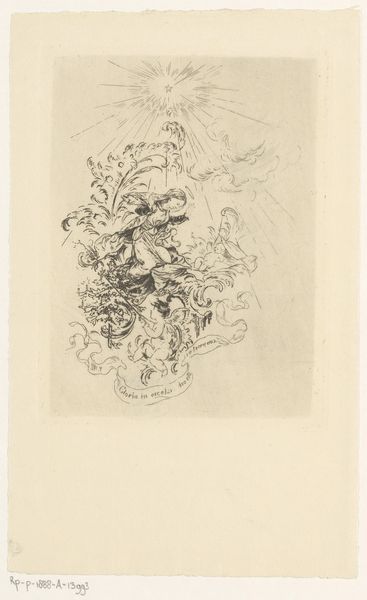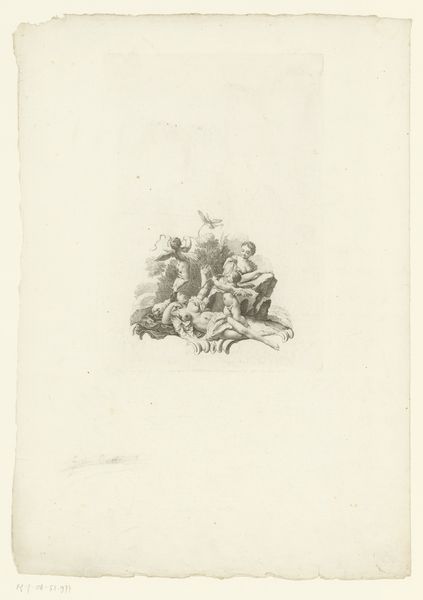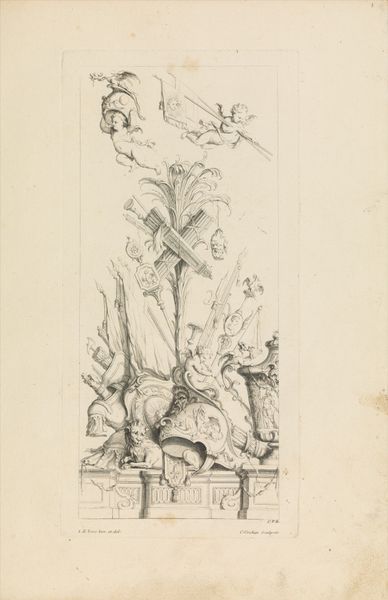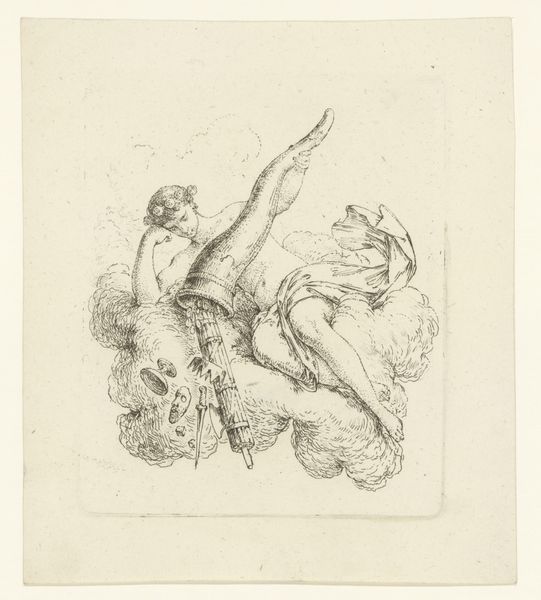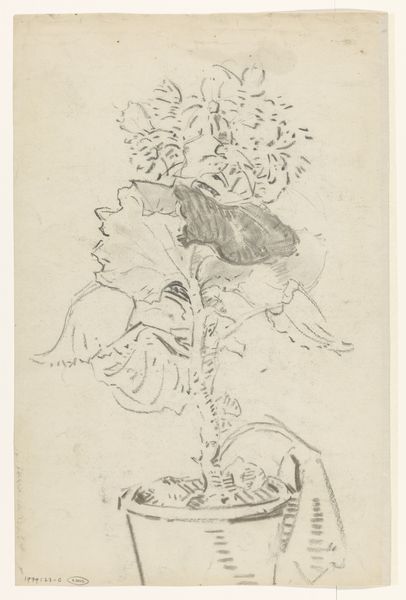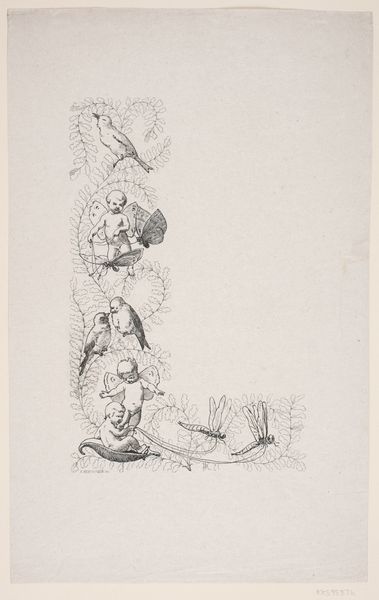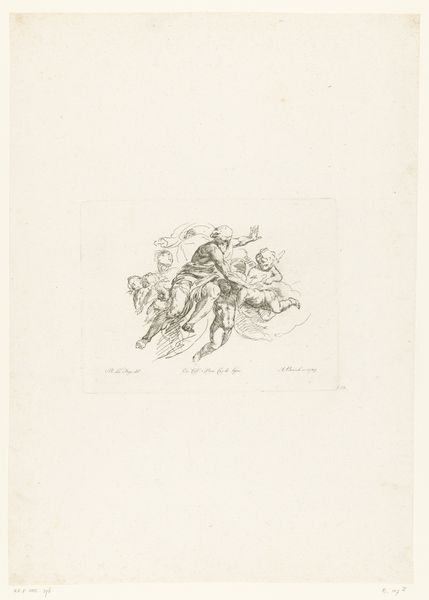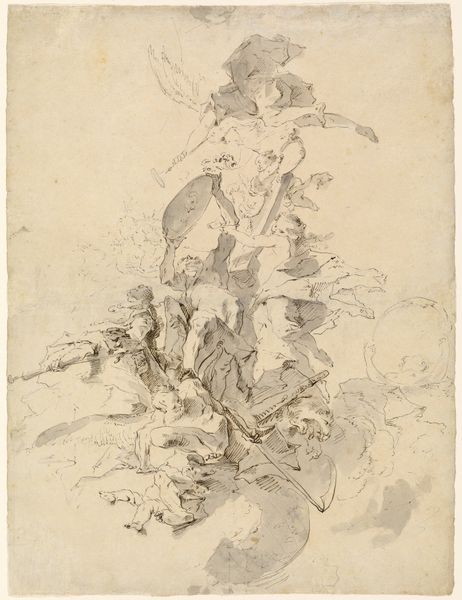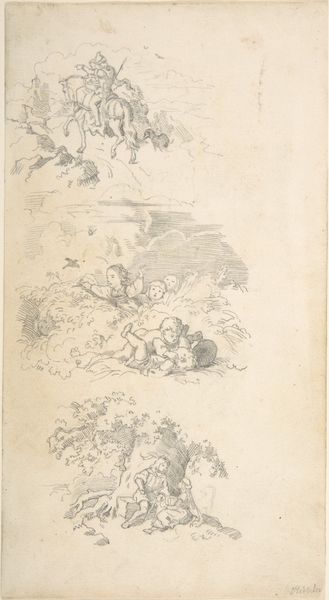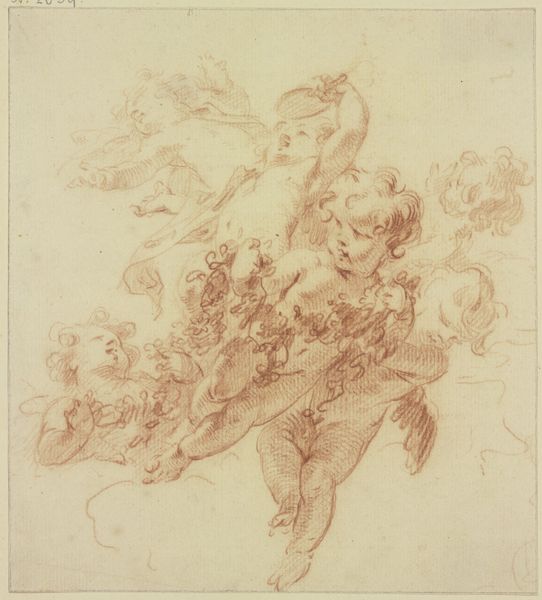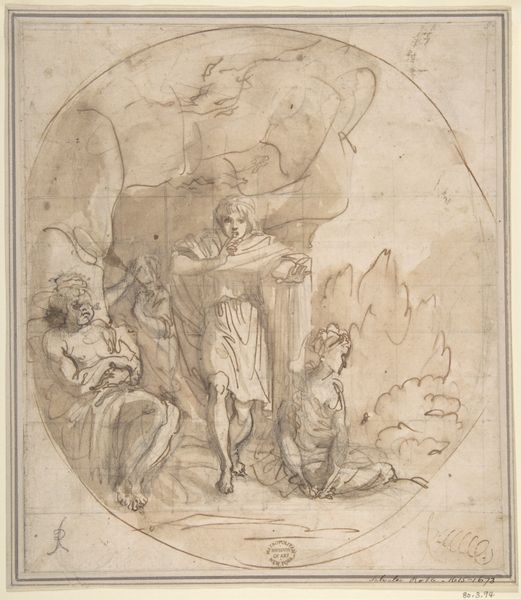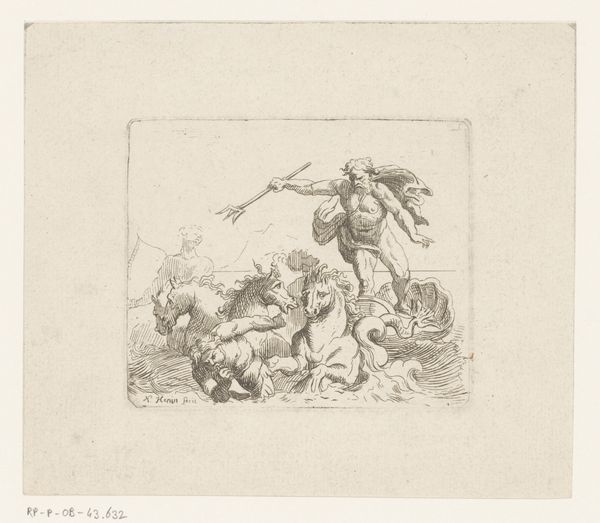
Dimensions: height 153 mm, width 114 mm
Copyright: Rijks Museum: Open Domain
Christian Bernhard Rode created this etching, "Allegory of the Day," in eighteenth-century Germany, a time when the visual arts were deeply intertwined with social and political ideals. Here we see cherubic figures enacting the passage of time. One aims an arrow, symbolizing the dawn’s first light, while others hold torches or slumber, connoting midday and night. This type of allegory was popular among elite circles, reflecting a fascination with classical mythology and the concept of ordered time. Rode himself held positions in various art academies, institutions that played a crucial role in shaping artistic taste and promoting certain ideologies. The ruling classes often funded these institutions, expecting art to uphold their values and project their power. By studying the prints and publications of the period, we can better understand how art served as a tool for reinforcing or, occasionally, challenging the social order. The interpretation of art changes over time and through different contexts.
Comments
No comments
Be the first to comment and join the conversation on the ultimate creative platform.
